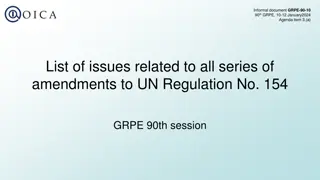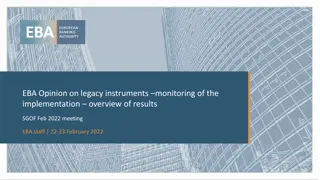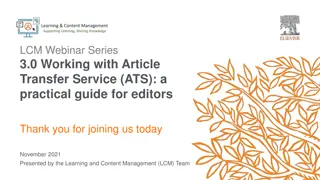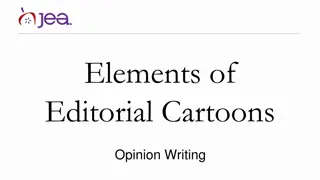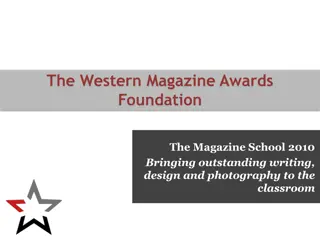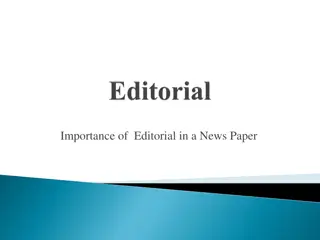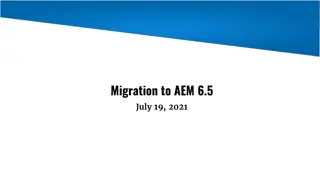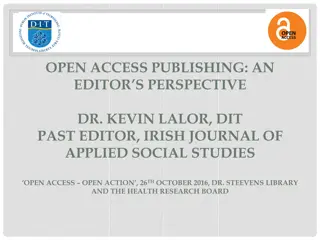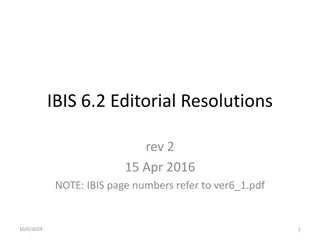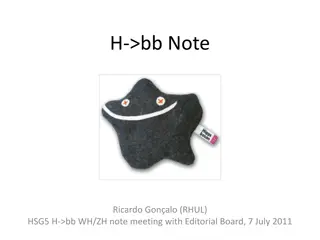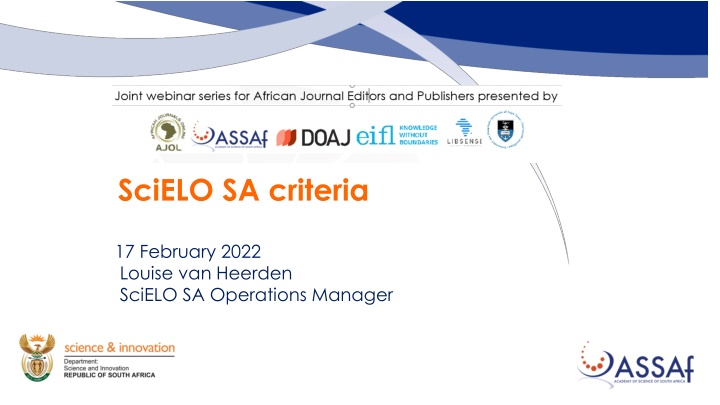
SciELO SA: South African Scholarly Journal Database
SciELO SA is a prestigious open-access database showcasing high-quality South African scholarly journals. Learn about its origins, importance, and why journals aspire to be part of this renowned platform.
Uploaded on | 1 Views
Download Presentation

Please find below an Image/Link to download the presentation.
The content on the website is provided AS IS for your information and personal use only. It may not be sold, licensed, or shared on other websites without obtaining consent from the author. If you encounter any issues during the download, it is possible that the publisher has removed the file from their server.
You are allowed to download the files provided on this website for personal or commercial use, subject to the condition that they are used lawfully. All files are the property of their respective owners.
The content on the website is provided AS IS for your information and personal use only. It may not be sold, licensed, or shared on other websites without obtaining consent from the author.
E N D
Presentation Transcript
SciELO SA criteria 17 February 2022 Louise van Heerden SciELO SA Operations Manager
What is SciELO SA? A method or technique that has been generally accepted as superior to any alternatives. because it produces results that are superior to those achieved by other means or because it has become a standard way of doing things and are used to maintain quality and can be based on self-assessment or benchmarking. (Bogan & English, 1994)
What is SciELO SA? Firstly SciELO stands for Scientific Electronic Library Online. All SciELO journals are open access. SciELO originated in Brazil and there are now national collections in 15 countries, that make up the SciELO Network of journals.
SciELO SA is a prestigious open-access (free to access), full-text searchable database of selected, high-quality South African scholarly journals. SciELO SA focuses on strengthening the scholarly journal evaluation and accreditation systems in South Africa through wide dissemination of excellent SA research and by representing publishing best practice.
Why do journals want to be included in SciELO? - Strict standards and requirements - Well managed - Highly regarded index in the South - SciELO Citation Index forms part of the Clarivate Web of Knowledge search platform.
The SciELO SA collection was started in 2009 www.scielo.org.za SciELO SA currently includes 84 titles http://www.scielo.org.za/scielo.php?script=sci_alphabetic &lng=en&nrm=iso SciELO SA is managed by the Academy of Science of South Africa (ASSAf), funded by the SA Department of Science and Innovation (DSI) and endorsed / accredited by the SA Department of Higher Education & Training (DHET).
What editorial practices need to be in place to be included in SciELO - First be accredited to the Department of Higher Education and Training. - Then undergo a rigorous process of quality appraisal by an ASSAf peer-review panel that evaluates the journal and the quality of the articles. - The panel investigates the reliability and credibility of the journal and if it offers innovative research by South Africa s top researchers. - Be recommended for inclusion in SciELO SA by the evaluation panel. - Then the SciELO SA team checks if the journal adheres to the SciELO Network criteria. -
Criteria for inclusion in (and remaining in) the SciELO SA collection: https://sites.google.com/view/assaf-scholarly-pub-resources/scielo- sa/criteria-for-acceptance For a journal to be invited to be included in the SciELO SA collection it needs to meet the following criteria: 1. The Journal needs to be a South African journal accredited by the SA Department of Higher Education and Training (DHET). 2. Have received a positive peer review evaluation and recommendation for inclusion in SciELO SA, from the relevant ASSAf Peer Review Panel.
Criteria for inclusion in (and remaining in) the SciELO SA collection: 3. Publish open accessibly, i.e., there is no cost for, or embargo on full- text articles and ASSAf may harvest the articles from the journal s website for e-publication on the SciELO SA platform. 4. The journal needs to have its own website with an archive of the the journal s issues and articles. 5. The primary website of the journal needs to be open access.
Why open access? Story of the mother of a family making a meal (**) at home, and then taking it to the next village and her own family gets none of it. (Source: Abednego Corletey, Association of African Universities) Research for journal articles (see ** above) is funded mainly by government. But many of these articles are not freely available to South Africans because they are published in commercial journals / databases.
Criteria for inclusion in (and remaining in) the SciELO SA collection (cont) 6. Publish regularly, on time and throughout the year. Where a journal publishes continuously at least three articles need to be sent to the SciELO team by end-March, 3+ articles by the end of June, another 3 by the end of September and another 3 by mid-December. 7. Publish at least 10-12 original articles per year depending on the subject area. 8. Assign Digital Object Identifiers (DOIs) to its original articles. E.g.
Criteria for inclusion in (and remaining in) the SciELO SA collection (cont) 9. All articles must include an English abstract and English keywords. 10. The affiliations and ORCIDs of authors need to be stated in the article. 11. State the journal s Creative Commons license, e.g., CC-BY 4.0, on the journal s webpage BY means that credit must be given to the creator. Share copy and redistribute the material in any medium or format Adapt remix, transform, and build upon the material for any purpose.
Criteria for inclusion in (and remaining in) the SciELO SA collection (cont) 12. Sign a Publisher s Agreement with ASSAf. 13. Provide proof of applying for inclusion in the Directory of Open Access Journals (DOAJ).
Thank you Louise@assaf.org.za

